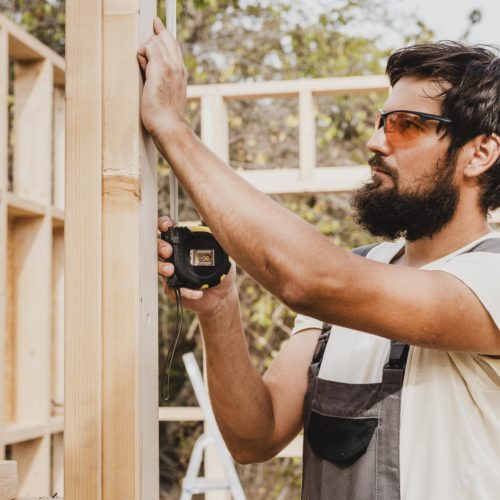Understanding Wood Movement: What You Need to Know
Wood movement is a natural phenomenon caused by changes in moisture content. If you’ve ever tried to open a wooden door in the summer only to have it stick in the frame, you know what we mean! Wood expands in high humidity, and contracts in dry conditions, and this seasonal process can lead to problems like sticking doors and cracks over time. While wood movement cannot be prevented, it can be managed. We’ve rounded up some key points to consider:
- Choose Stable Wood Species: Opt for more stable woods like redwood, cedar, and fir to minimize movement.
- Consider Direction: Wood moves more across its width rather than length, so focus less on changes in board length.
- Pay Attention to Grain: Grain orientation affects movement. Flat-grain boards move more than vertical-grain words, so it’s important to select wood with the desired grain pattern.
- Acclimate Wood: Store boards in the room where they’ll be used before installation to allow them to adjust to the environment. Note that thicker or wider boards may require a longer period of time to acclimate.
- Apply Finishes: Finishing wood slows down expansion and contraction while protecting the natural appearance of the wood.
- Plan Ahead: Account for wood movement in your project’s design. Utilizing a wood movement calculator will allow you to leave space for expansion and contraction, such as gaps between boards or unfilled cracks in hardwood floors.
- Control Indoor Humidity: Use dehumidifiers in summer and humidifiers in winter to maintain stable indoor humidity levels.
By understanding wood movement and implementing these strategies, you can mitigate potential flexing due to contraction or expansion and ensure the success of your project. For assistance with your construction, manufacturing, and application, reach out to the experts at AIFP today! Explore our lumber blog for additional insights on topics like pressure-treated wood and dimensional lumber!

Jump Start Your Career
Up for the challenge? We'll give you the tools to excel. AIFP is continually growing. We recruit new traders year-round.
